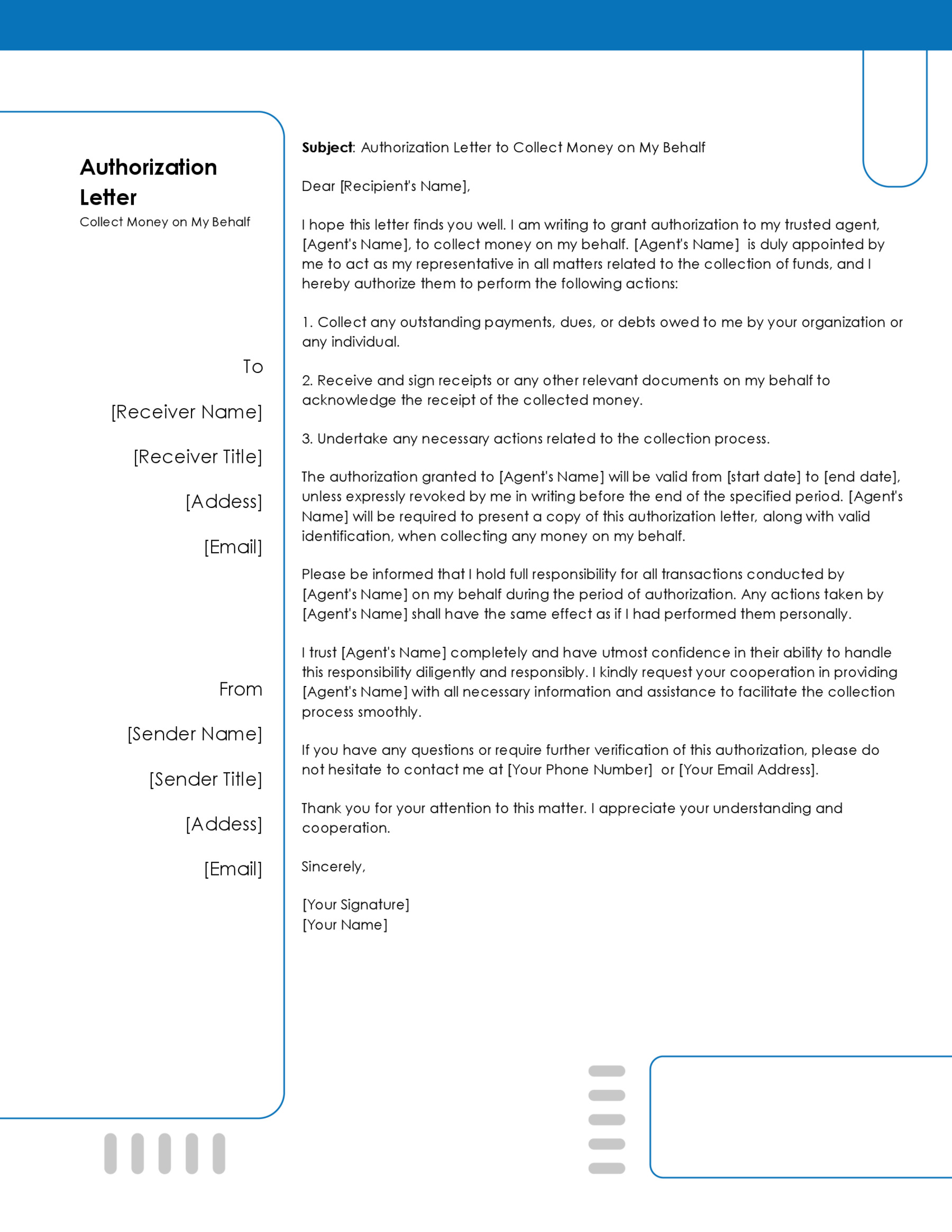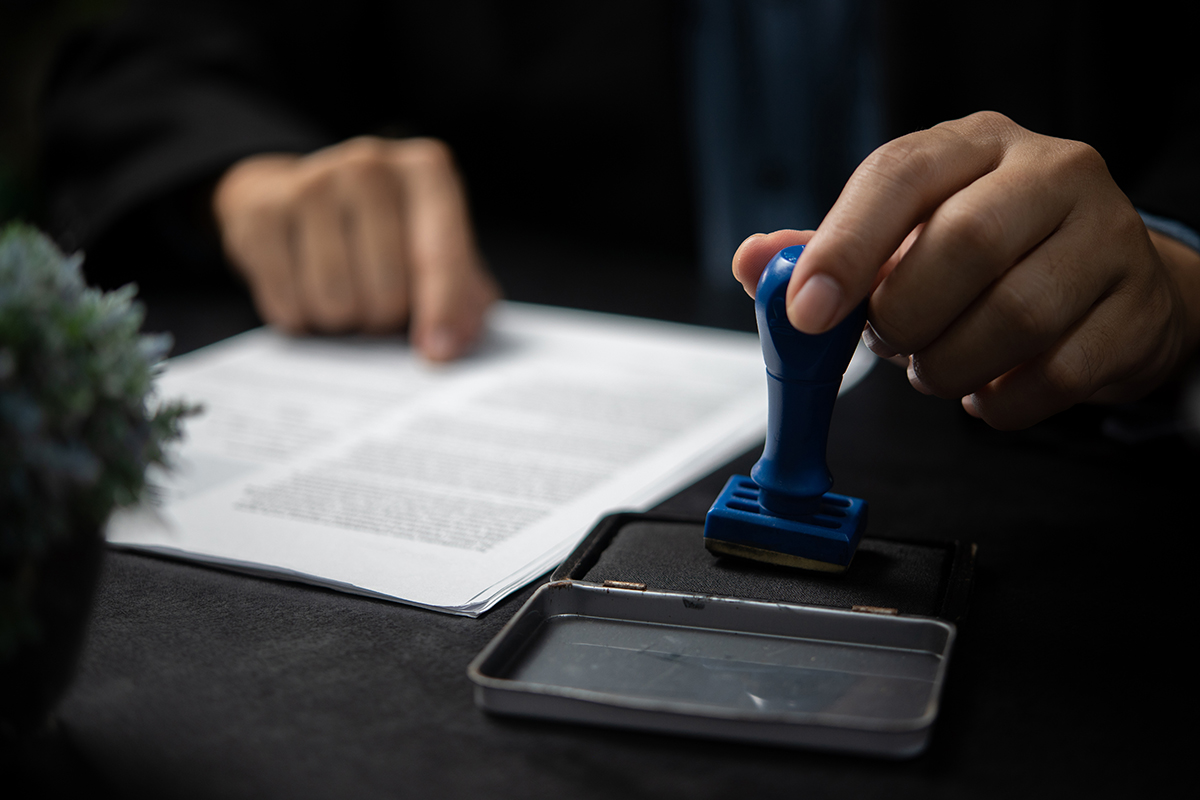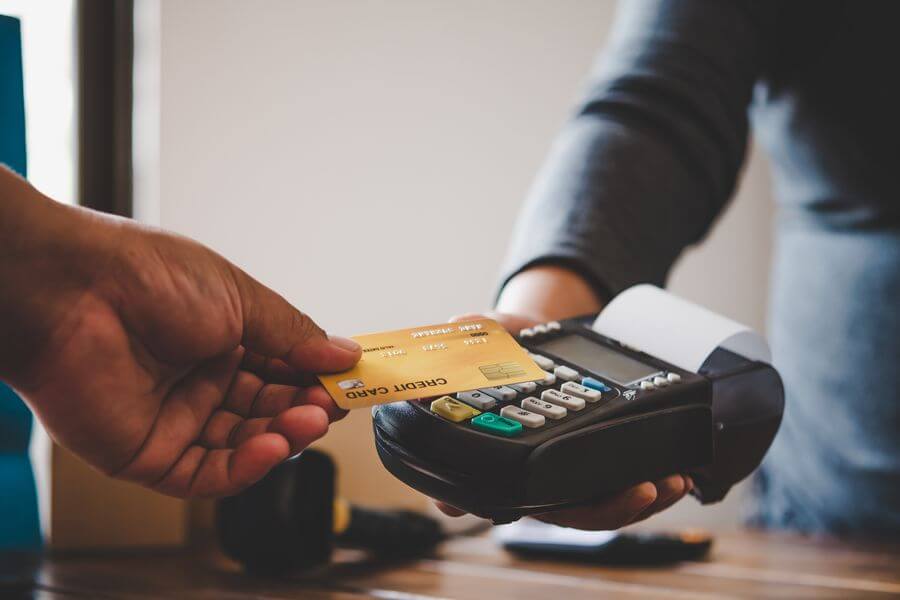It is common to find yourself juggling a busy schedule, making it difficult to visit your bank to collect crucial paperwork in person. However, in today’s world of convenience and flexibility, this doesn’t have to be an issue. An authorization letter eliminates the constraints of time and distance, allowing you to access essential documents from your bank through a designated representative. Whether it is sensitive financial records, legal paperwork, or loan agreements, this letter paves the way for a smoother, more efficient banking experience.
In this comprehensive guide, you will learn how a well-structured letter can empower a trusted representative to retrieve vital documents on your behalf. You will learn the key components of such a letter and tips to make it more effective.
An authorization letter is a professionally written document that grants another party (referred to as an agent) the legal authority to collect specific documents or information on your behalf from a bank.
This letter is commonly used when you cannot personally visit the bank due to factors such as distance, time constraints, medical issues, or other work and personal commitments. It can delegate the responsibility to collect documents or authorize transactions as per the bank’s policies. This letter serves as formal proof that you have permitted another person to undertake this task.
10 Key Components of an Authorization Letter
A letter of authority provides a structured means to convey authorization to both the designated agent and the bank. To achieve this, there are essential components that must appear within the structure of the letter.
Below, we outline the fundamental components that must be incorporated within such a letter:
Your information
This section should include your full legal name, address, contact number, and any other relevant identification details that the bank might require to verify your identity. This information establishes who the account holder or document owner is. It’s imperative to ensure that the details provided here match the information on record with the bank to avoid any confusion.
Date
The date when the letter is being written should be included. This helps in establishing the timeline of the authorization and provides clarity regarding when the permission was granted. The date serves as a reference point for record-keeping.
Recipient’s details
Specify the intended recipient of the letter. Indicate the bank’s official name, department or branch, address, and contact information (phone number and email). If applicable, identify the point of contact, such as the branch manager or customer support. Make sure to include their professional title. This information clarifies to whom the letter is being directed within the bank.
Salutation
This is the opening of the letter, where you address the bank or its relevant department. A simple “Dear [Bank Name] Team” or “To Whom It May Concern” is appropriate. A salutation sets the professional tone for the letter.
Purpose of authorization
This component clearly states the purpose of the authorization. Mention that you are granting permission for the authorized representative to collect specific documents on your behalf. Also, indicate your bank account name and number to expedite processing. Be explicit about the nature of the documents you want collected, whether they are account statements, legal documents, or any other relevant materials.
Agent’s details
This section should include the full name, address, and contact number of the person you are authorizing to collect the documents on your behalf. Providing accurate contact information is important in case the bank needs to verify the representative’s identity and reach out to them for any reason.
Authorization scope and limitations
In this section of the letter, you should specify the scope of the authorization. You can state that the representative is authorized only to collect the specified documents and is not permitted to undertake any other actions or transactions on your behalf. You can also include additional instructions that guide the agent in fulfilling their responsibilities. This section helps prevent any unauthorized actions.
Date and duration
Mention the authorization date and clarify whether it is a one-time authorization or extended for a designated period. This detail helps in understanding the validity period of the authorization. Additionally, it limits the agent’s authority and gives you control over when and how long you want the agent to represent you.
Closing statement
The closing statement reaffirms your authorization and its purpose. Express gratitude to the recipient for their continued assistance and cooperation. This ensures that you conclude the letter on a positive note.
Your signature
Your handwritten signature is crucial, as it formally confirms your consent to issuing the authorization. It serves as evidence that you take responsibility for the stipulations of the letter of authority. Therefore, you should sign the letter by hand right after the formal closing. A signature adds a personal touch and authenticity to the document.
Notarization (optional)
Depending on local regulations, the bank’s requirements, and the sensitivity of the retrieved documents, you might need to have the letter notarized by a notary public. Notarization involves a notary public verifying your identity and witnessing your signature to make the document legally valid and binding. It is particularly valuable for multi-jurisdiction authorizations in the context of international transactions.
Sample Letters

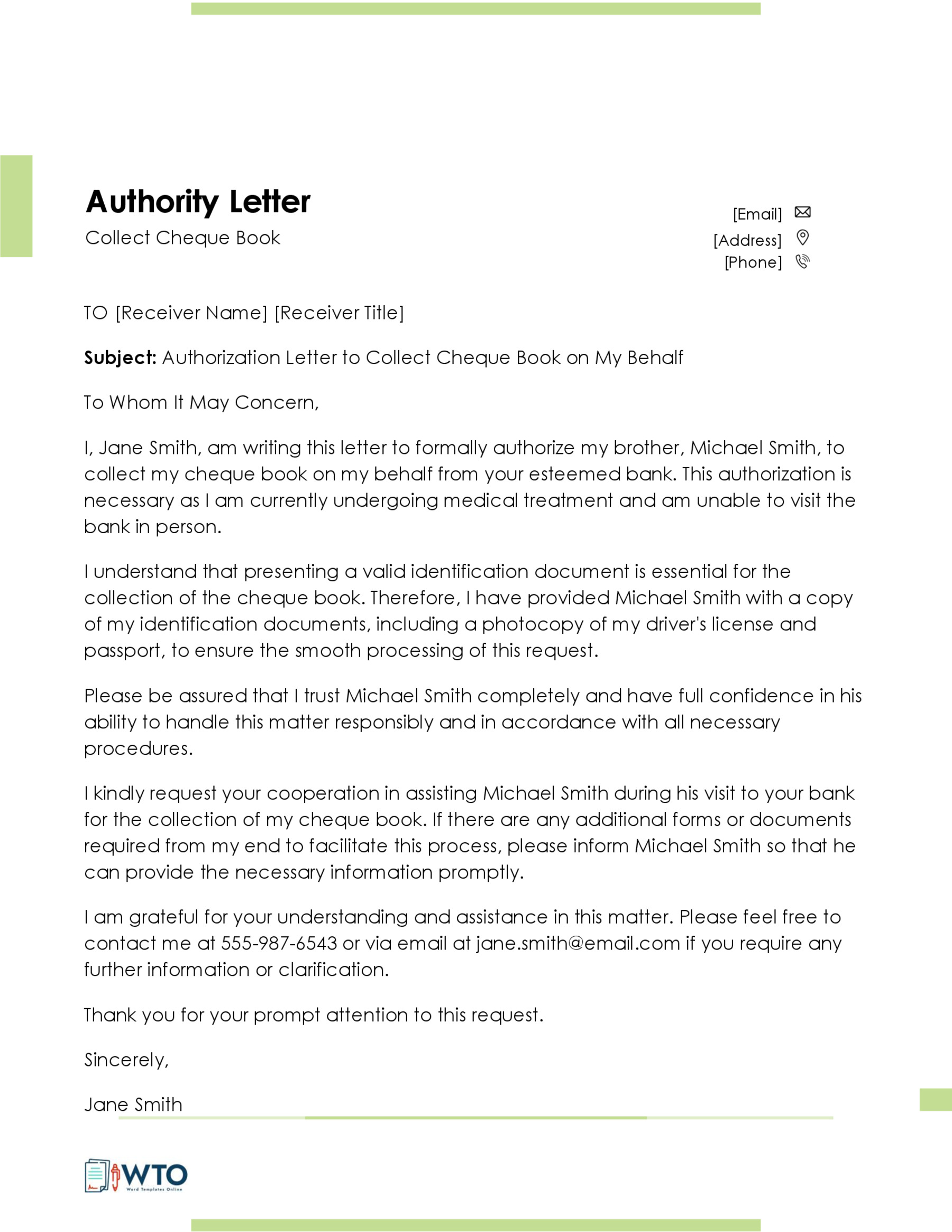
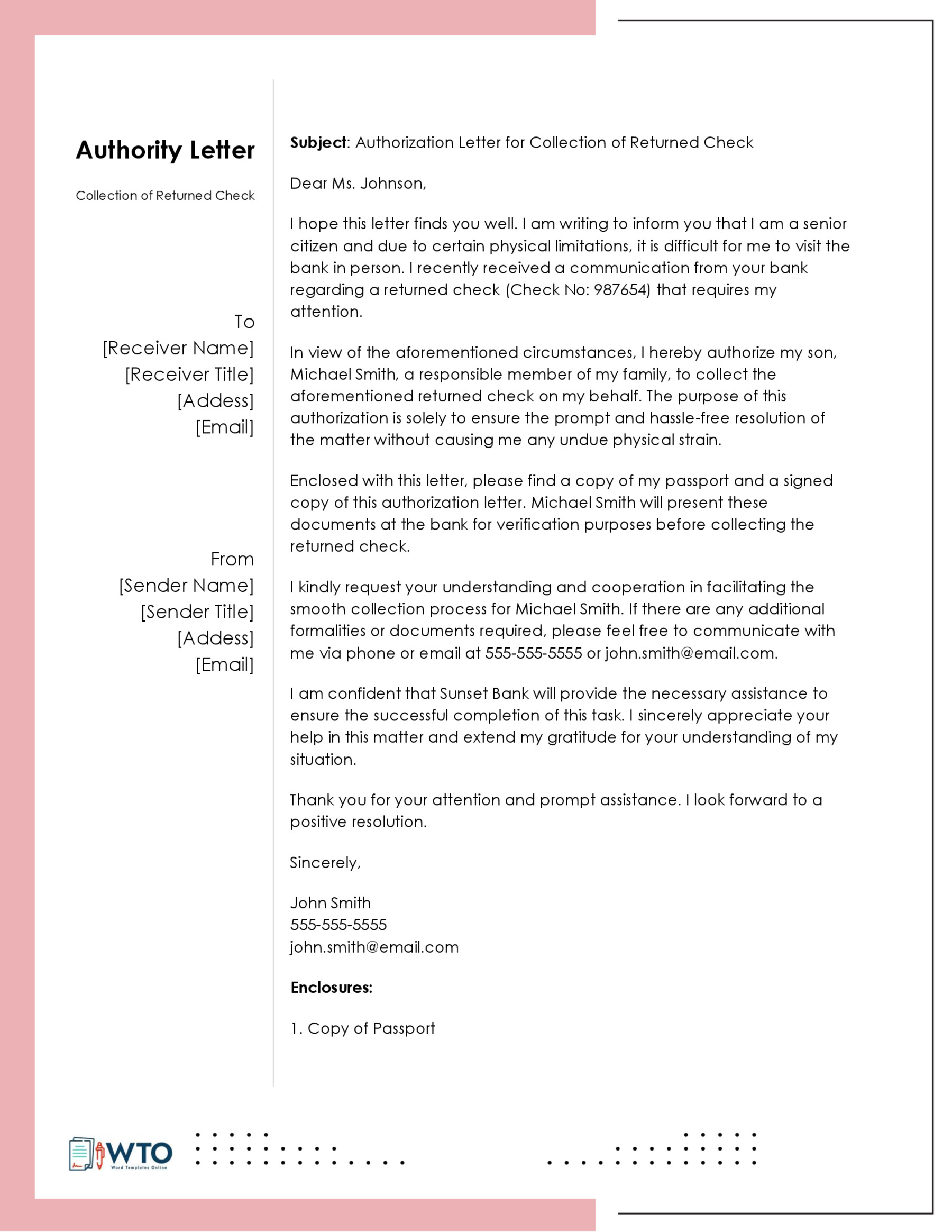
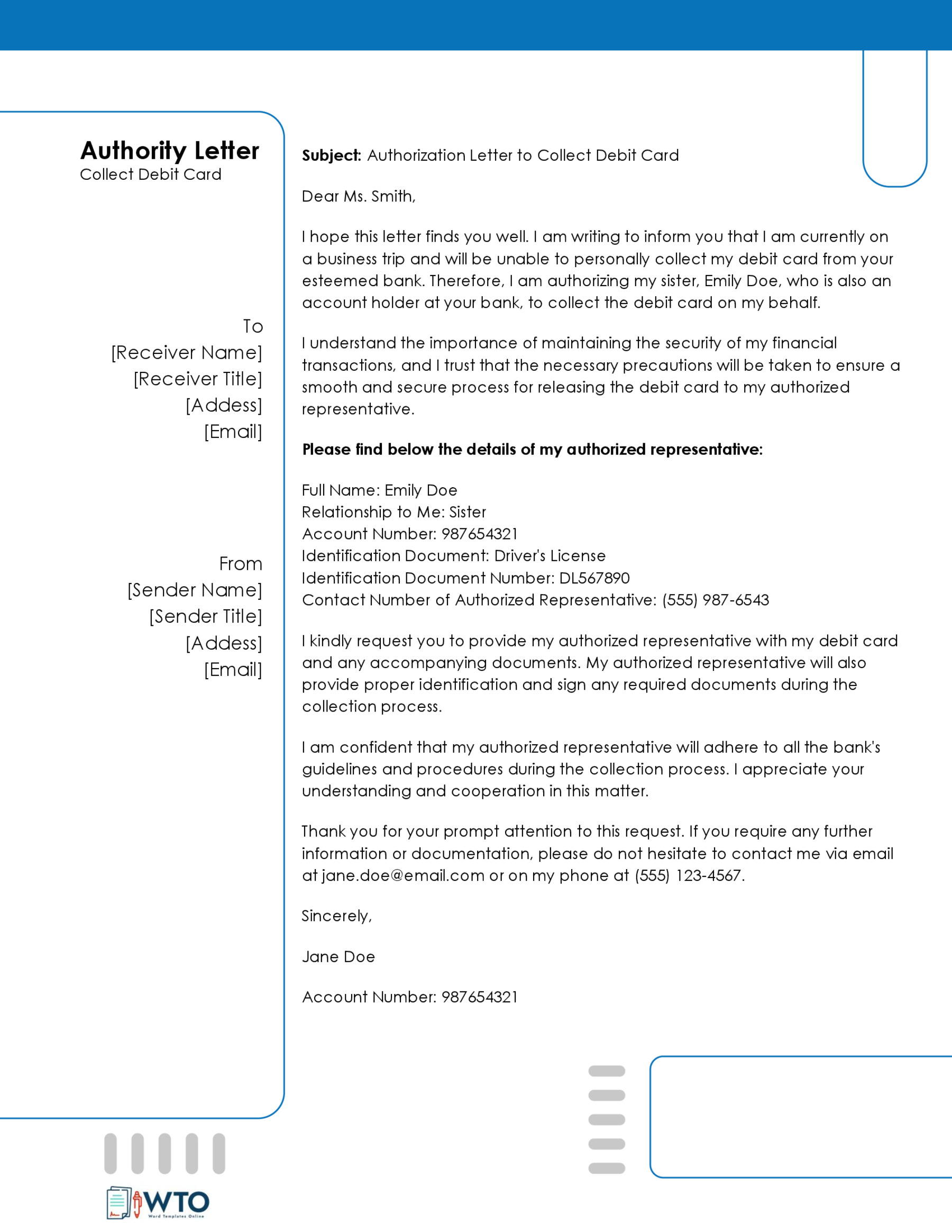
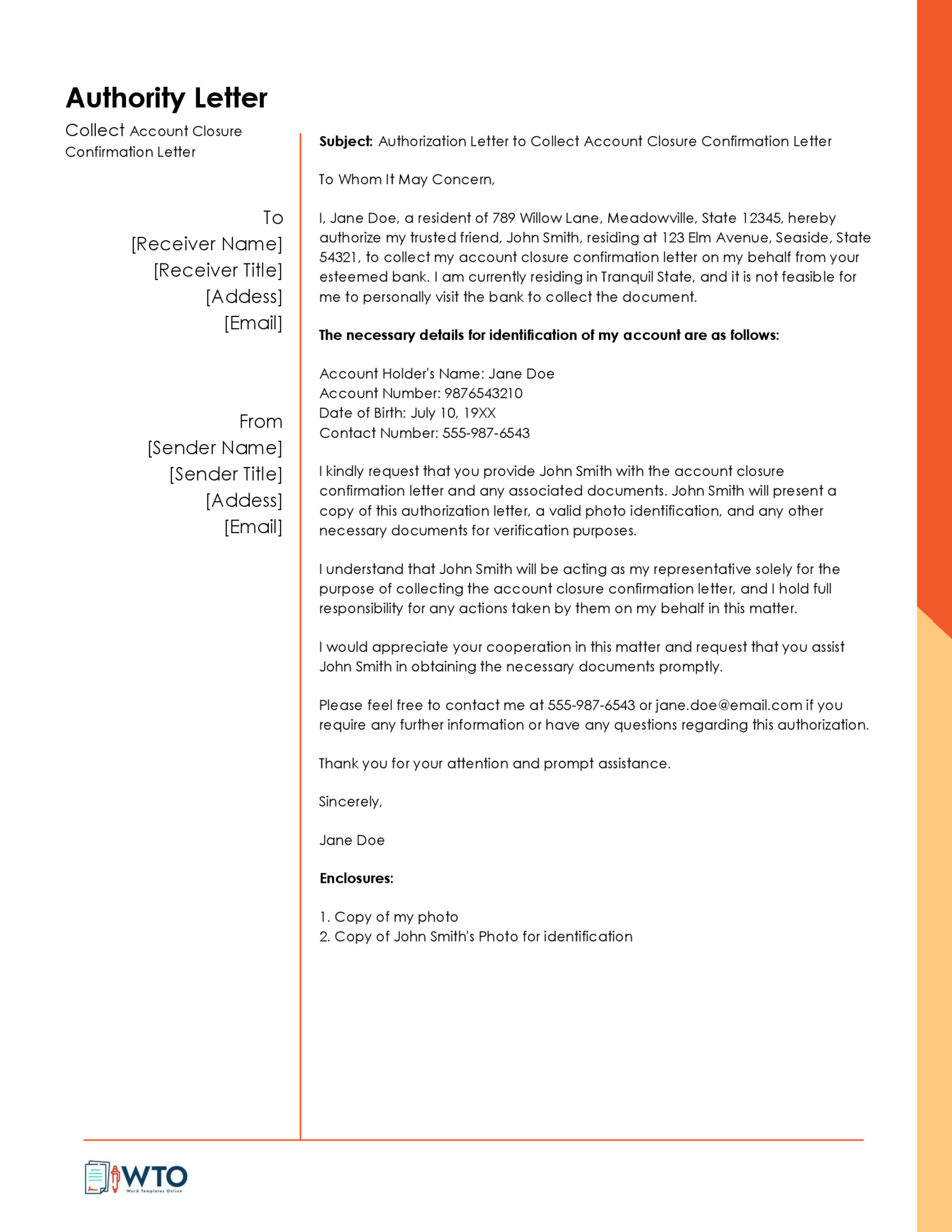
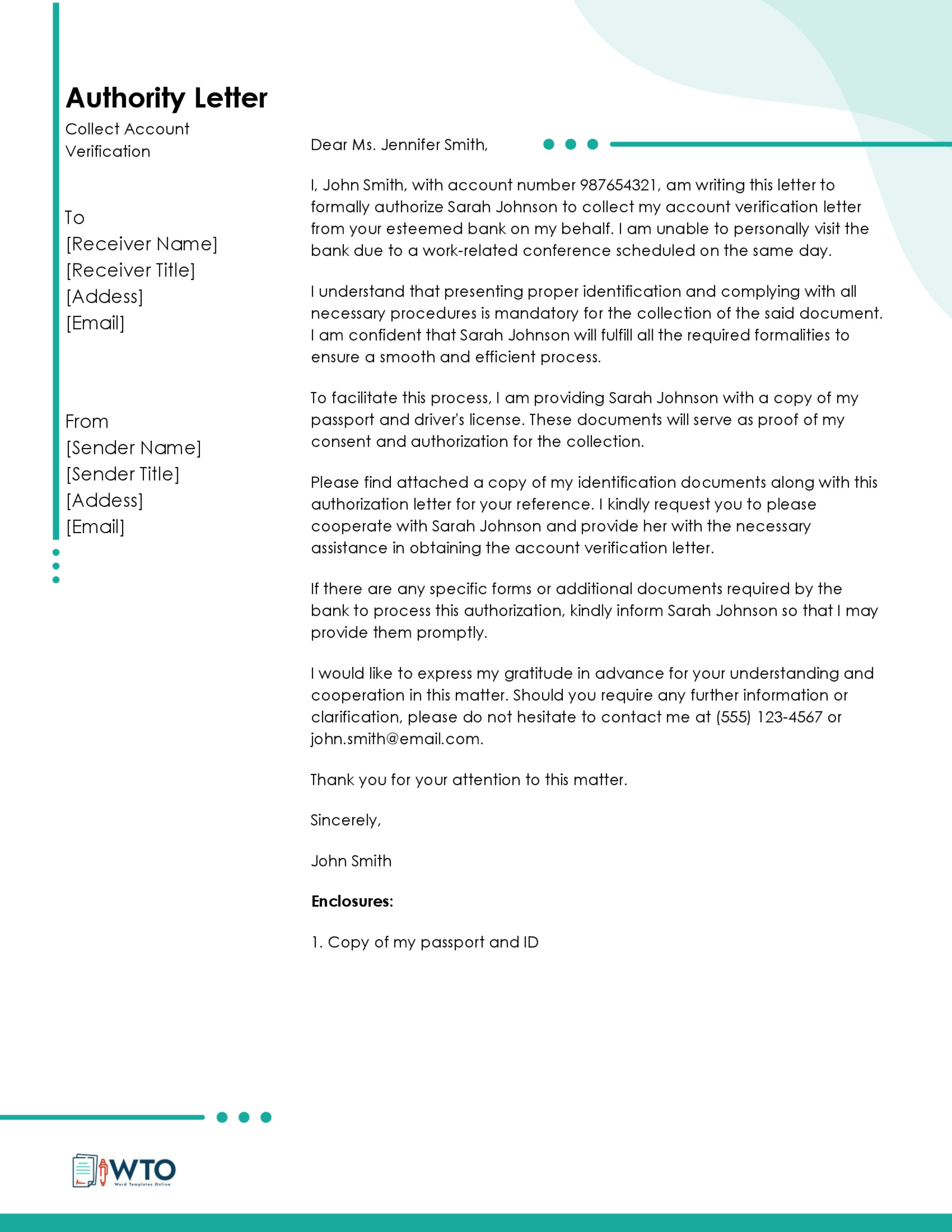
Free Template for Authorization Letter
[Your Full Name]
[Your Address]
[City, State, Zip Code]
[Email Address]
[Phone Number]
[Date]
[Bank or Financial Institution’s Name]
[Bank’s Address]
[City, State, Zip Code]
Subject: Authorization to Collect Documents
Dear [Bank Manager’s Name or Bank’s Name],
I, [Your Full Name], holding an account (Account Number: [Your Account Number]) with your esteemed bank, hereby authorize [Authorized Person’s Name], whose signature is attested below, to collect [Specify Documents, e.g., bank statements, loan documents, etc.] on my behalf.
Due to [reason for inability to collect documents], I am unable to be present in person to collect the documents. I trust that [Authorized Person’s Name] will handle the documents with the utmost care and confidentiality.
Please find attached a photocopy of my [Identification Document Type, e.g., passport, driver’s license] and [Authorized Person’s Name]’s [Identification Document Type] for verification purposes. I kindly request your team to assist [Authorized Person’s Name] in the collection process and provide him/her with the necessary documents.
For any queries or further verification, please feel free to contact me at [Your Phone Number] or [Your Email Address]. I appreciate your understanding and cooperation in this matter.
Thank you for your prompt attention to this request.
Sincerely,
[Your Signature]
[Your Full Name]
[Authorized Person’s Signature for Verification]
[Authorized Person’s Name]
Attachment List
- Photocopy of [Your Identification Document]
- Photocopy of [Authorized Person’s Identification Document]
Notary Block
State of ____________
County of ___________
On this ___ day of __________, 20, before me, [Notary’s Name], a notary public, personally appeared [Your Full Name] and [Authorized Person’s Name], known to me (or satisfactorily proven) to be the persons whose names are subscribed to the within instrument and acknowledged that they executed the same for the purposes therein contained.
In witness whereof, I hereunto set my hand and official seal.
[Notary Signature]
[Printed Name of Notary]
Notary Public
My Commission Expires: __________
Attachment List
Sample Letter
Subject: Authorization to Collect Loan Documents
Dear Community Bank Manager,
I, Jane Doe, holding an account (Account Number: 789456123) with your esteemed bank, hereby authorize John Smith, whose signature is attested below, to collect my loan documents on my behalf.
Due to my current overseas assignment for work, I am unable to be present in person to collect the documents. I trust that John Smith will handle the documents with the utmost care and confidentiality.
Please find attached a photocopy of my driver’s license and John Smith’s passport for verification purposes. I kindly request your team to assist John Smith in the collection process and provide him with the necessary documents related to my loan approved on January 20, 20XX.
For any queries or further verification, please feel free to contact me at 555-0102 or jane.doe@email.com. I appreciate your understanding and cooperation in this matter.
Thank you for your prompt attention to this request.
Sincerely,
[Signature of Jane Doe]
Jane Doe
[Signature of John Smith for Verification]
John Smith
Notary Block
State of New York
County of Anytown
On this 13th day of February, 20XX, before me, Mary Clark, a notary public, personally appeared Jane Doe and John Smith, known to me (or satisfactorily proven) to be the persons whose names are subscribed to the within instrument and acknowledged that they executed the same for the purposes therein contained.
In witness whereof, I hereunto set my hand and official seal.
[Signature of Mary Clark]
Mary Clark
Notary Public
My Commission Expires: March 15, 20XX
Attachment List
- Photocopy of Jane Doe’s Driver’s License
- Photocopy of John Smith’s Passport
Analysis
This authorization letter is effectively structured to facilitate the collection of loan documents by a third party due to the account holder’s inability to be present. The letter’s effectiveness lies in its clarity, conciseness, and inclusion of all necessary information and verifications required by the bank to process the request securely. By specifying the account holder’s name, account number, and the designated individual’s name and signature, it directly addresses the bank’s need for identification and authorization verification. The inclusion of a specific reason for the authorization (overseas work assignment) adds legitimacy to the request, while the attachment of identification documents (driver’s license and passport photocopies) further aids in verifying the identities of both the account holder and the authorized individual. The provision of contact information ensures that the bank can reach the account holder for any queries or further verification, emphasizing transparency and open communication. Additionally, the notarization of the letter adds a legal layer of authenticity and trust, reassuring the bank of the document’s legitimacy. Overall, the letter’s structured presentation of information, combined with necessary legal precautions and clear instructions, makes it a comprehensive and effective tool for authorizing the collection of sensitive documents.
Key Tips for an Effective Letter
Creating an effective letter of authorization requires paying attention to various facets – content quality, organization, and presentation. The following distinct tips will guide you in composing a letter that facilitates the efficient delegation of document collection tasks to an agent:
Be clear and concise
When drafting your letter, ensure that your language is clear, straightforward, and to the point. Clearly state the purpose of the letter, the documents you are authorizing the representative to collect, and any limitations on their actions.
Use formal language
Since this letter is a formal document, use a polite and professional tone throughout. Address the bank respectfully, use proper salutations, and maintain a level of formality that reflects the seriousness of the request. Avoid unnecessary jargon or overly complicated language.
Provide supporting documents
It is a good idea to include copies of your identification documents, such as a government-issued ID or passport, along with the letter. This helps the bank verify your identity and enhances the credibility of the authorization. It also facilitates a smooth process.
Double-check details
Accuracy is crucial. Review all the details in the letter, including your information, the recipient’s details, dates, bank account particulars, and the purpose of the authorization. Mistakes or inaccuracies could lead to confusion or complications during the collection process.
Review bank policies
Familiarize yourself with the bank’s policies and requirements for authorization letters. Some banks may have specific formats or guidelines that they expect customers to follow. Adhering to these policies reduces the chances of your letter being rejected or questioned.
Free Templates
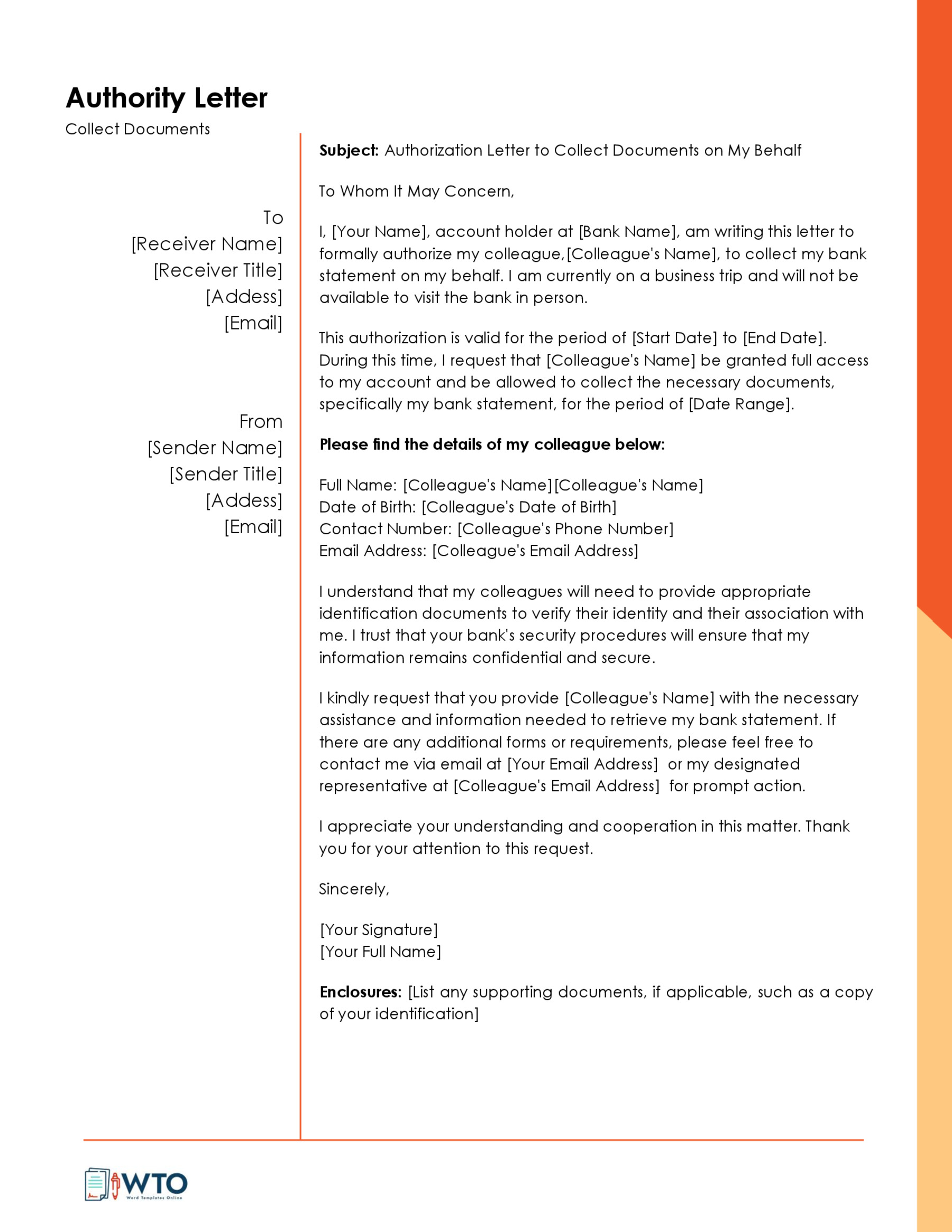
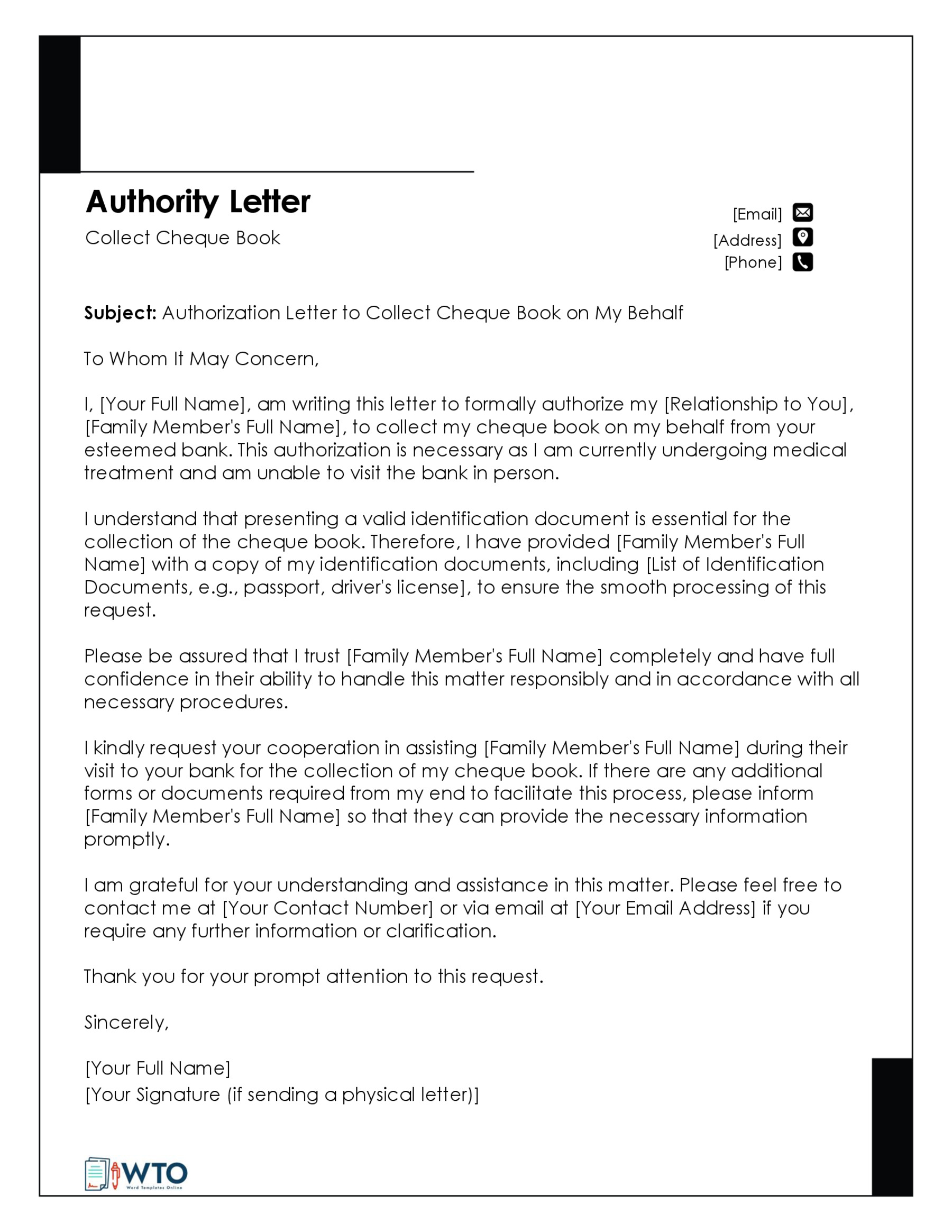
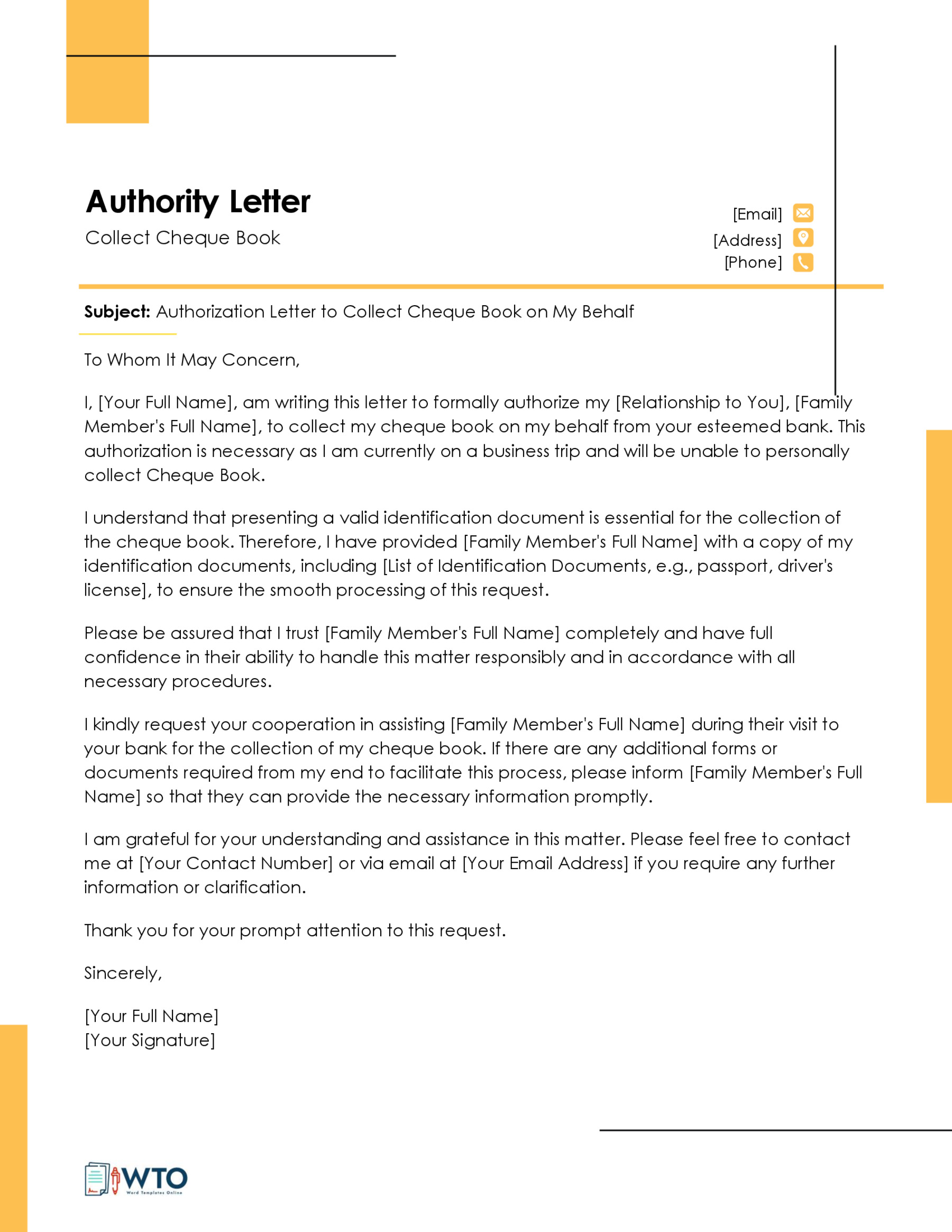
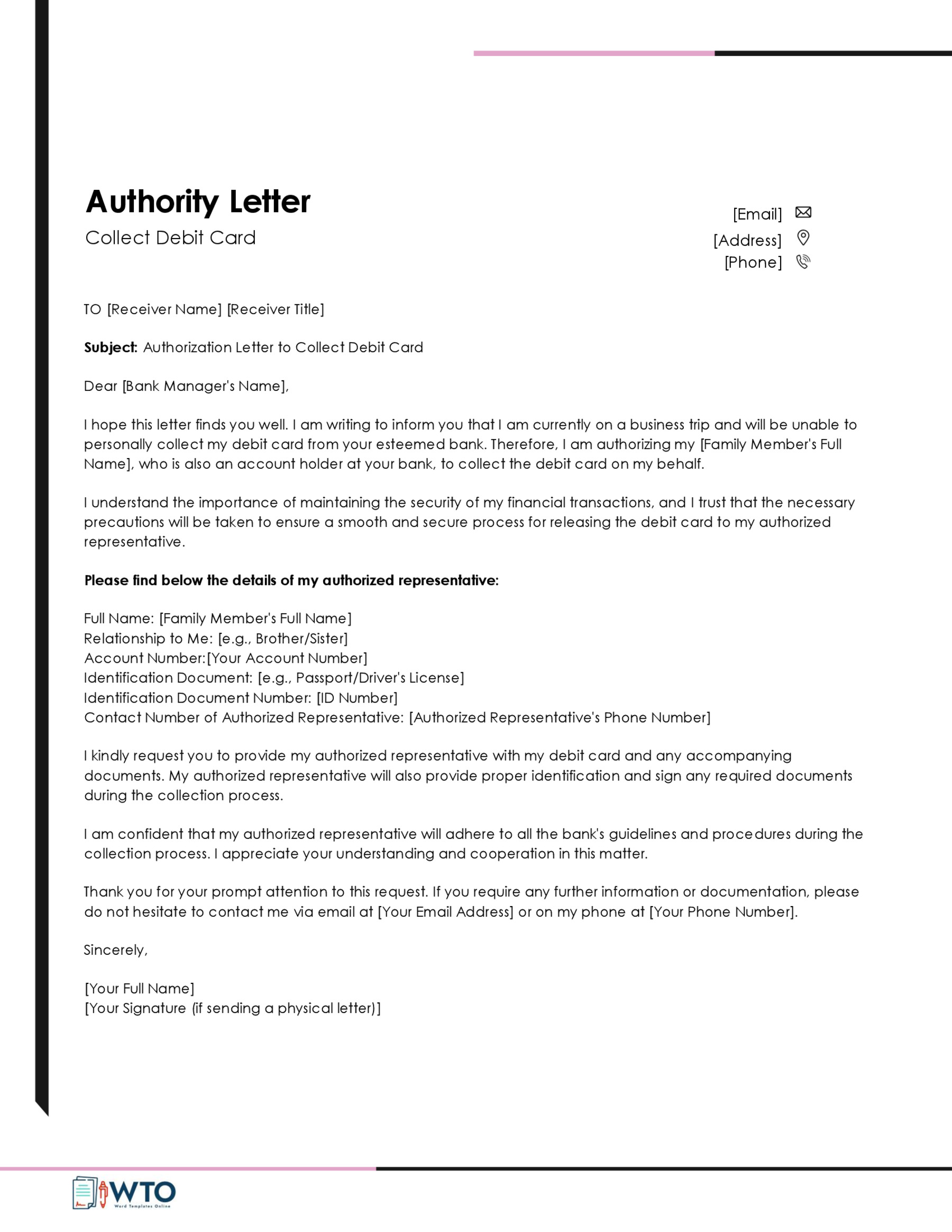
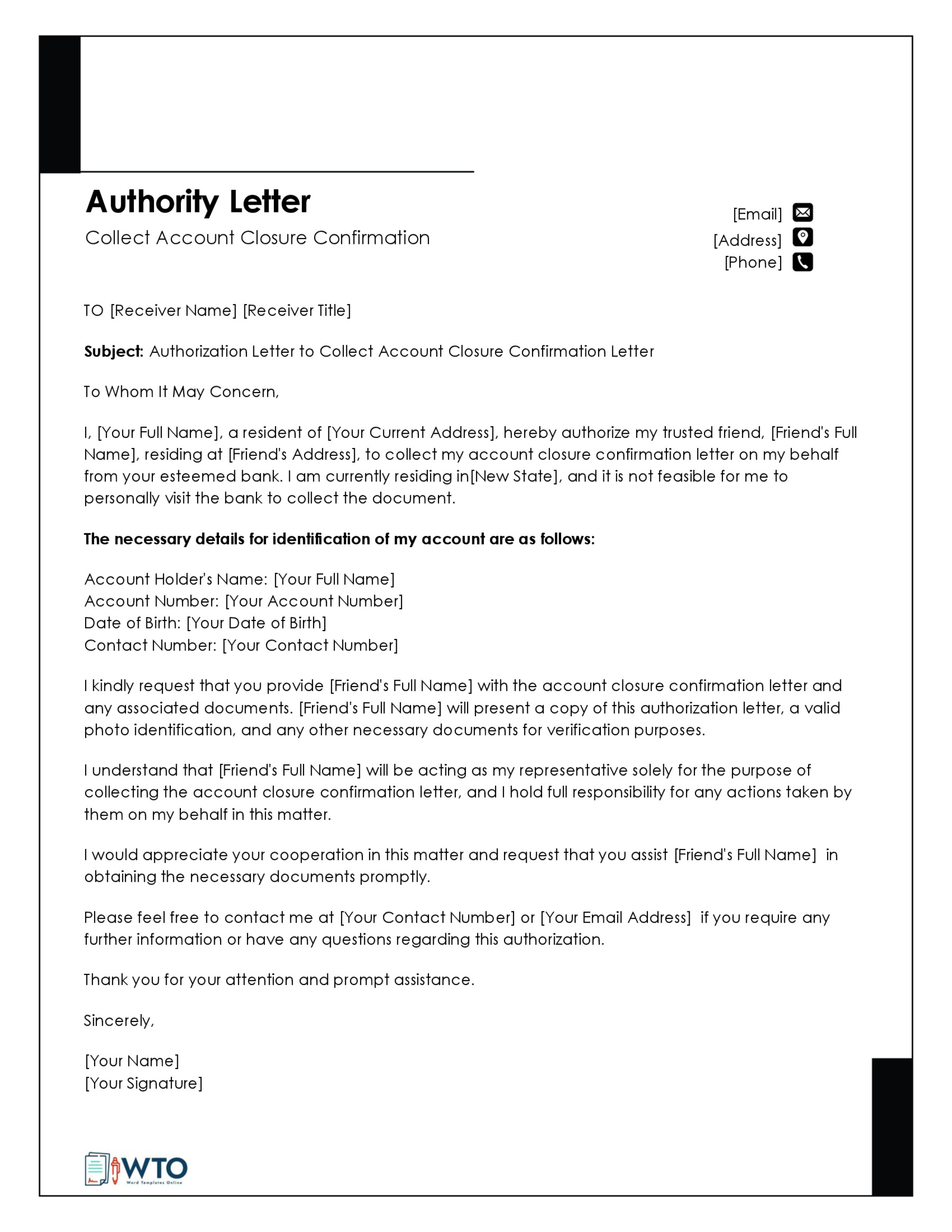
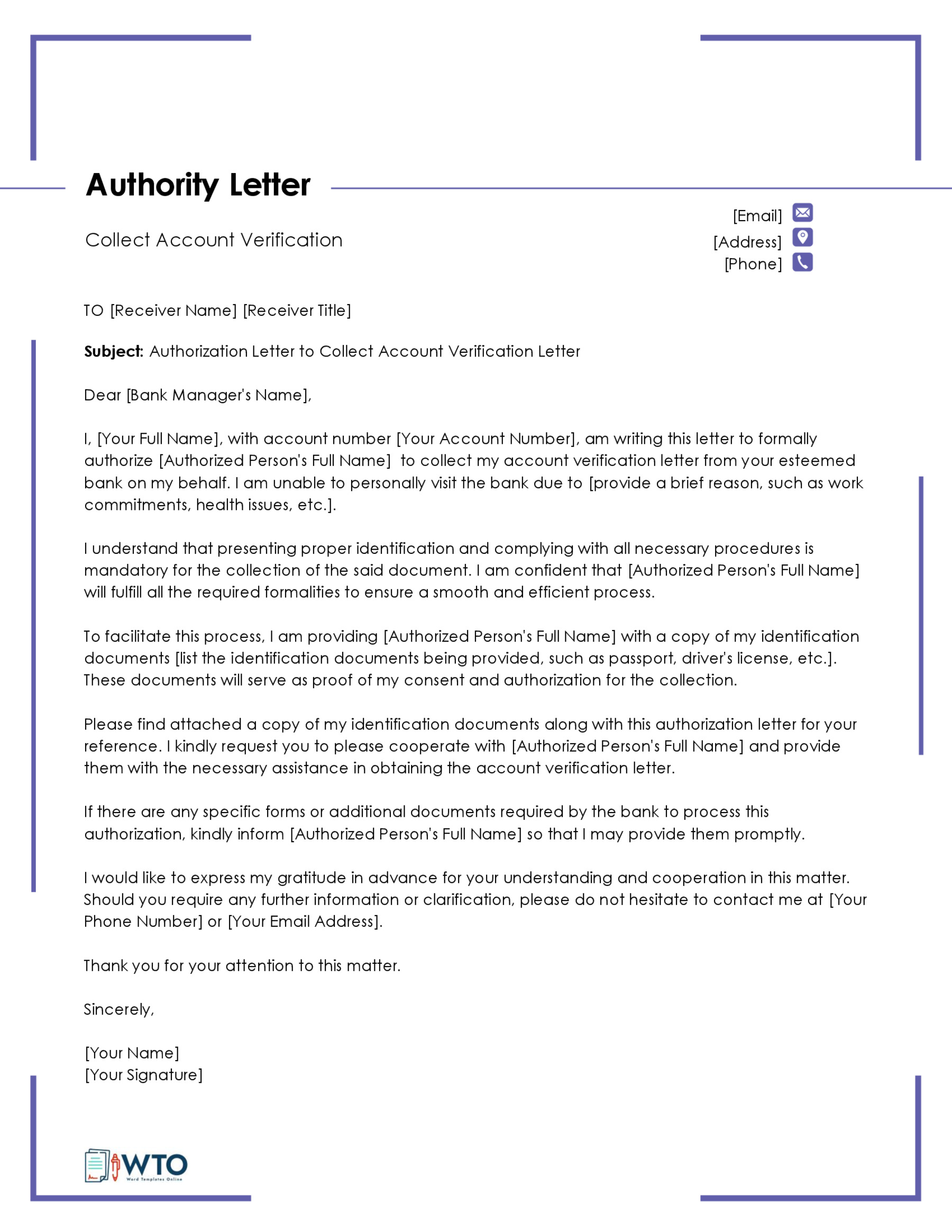
Conclusion
An authorization letter empowers a designated representative to retrieve essential documents on your behalf, enhancing the efficiency and convenience of your banking experience. The letter consists of several key components that provide structure and clarity. By understanding the components and following the tips delineated in this article, you can craft a well-structured and effective letter of authority. This document not only simplifies the collection of documents from the bank but also showcases your professionalism and attention to detail in managing your financial matters. Lastly, it is a good practice to contact your bank or visit their website to ascertain whether they offer templates or specific guidelines for drafting the letters.

